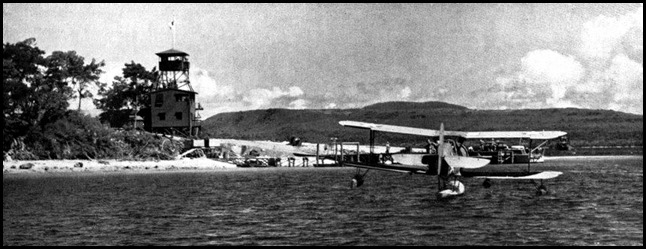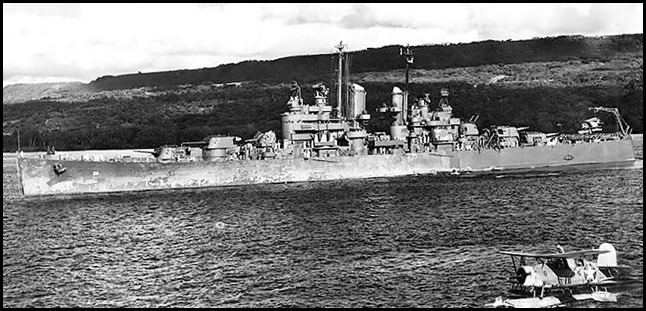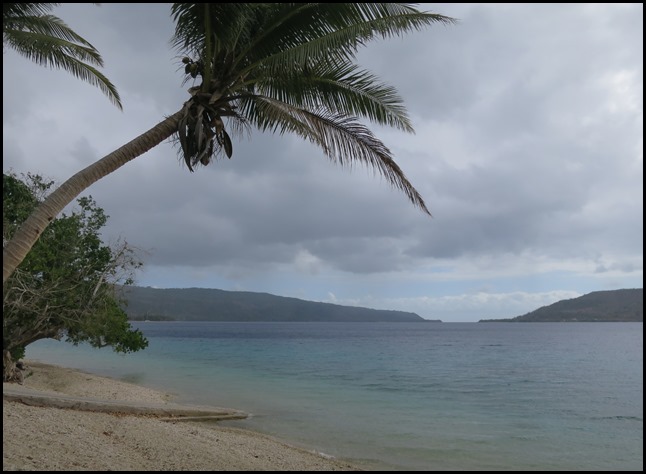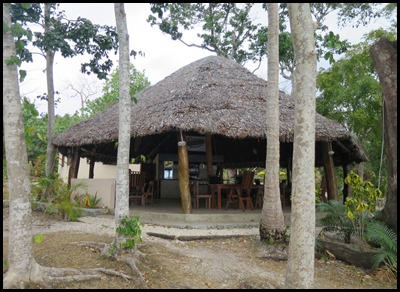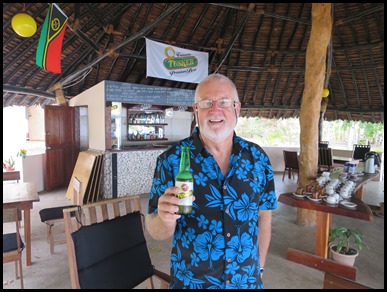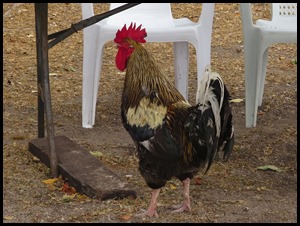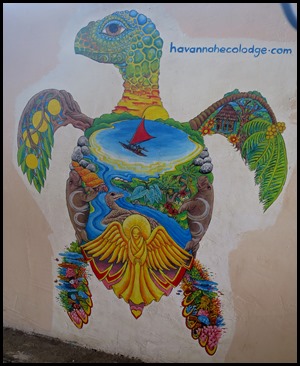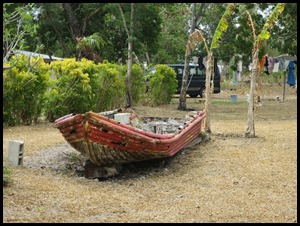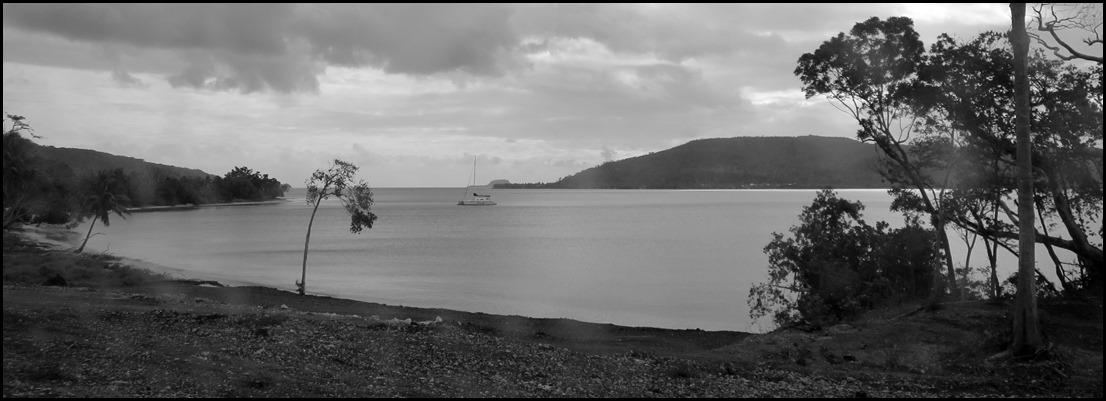Port Havannah

|
Port Havannah for
Lunch
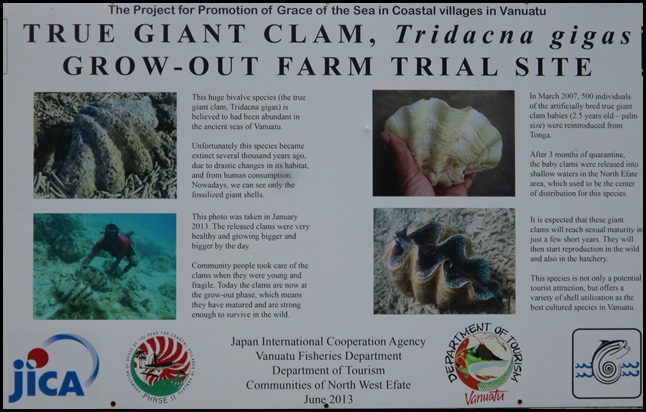 The weather wasn’t up
to much at breakfast, it had rained really heavily in the night and the wind was
up too, at least that stopped the cats and dogs fighting and barking. Not
fancying the beach, let’s go to Port Havannah
for a nozz and maybe some lunch. Sounds like a
plan. We stopped by the turning we had taken
on our Roi Mata Cultural Day en route to our guides village. I needed to read
what it said about the clams we had seen.
 The cow
opposite was mildly amused watching me scurry through a ditch to get the
clam picture, then he went back to his chewing. A tiny patch of green on a tight
corner of a main road, we suspect the owner of these two walks them here each
morning.
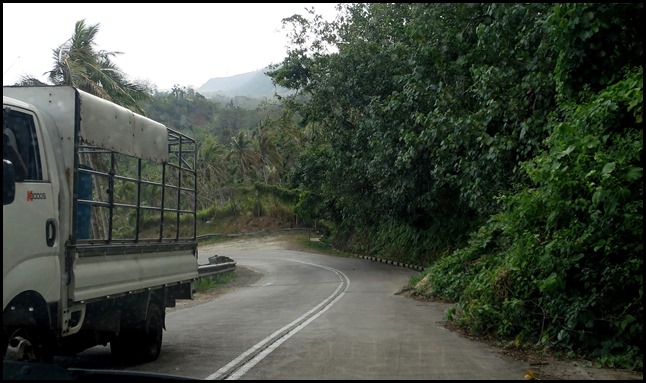 We are getting used to the very steep,
wiggly roads and veering round
landslides.
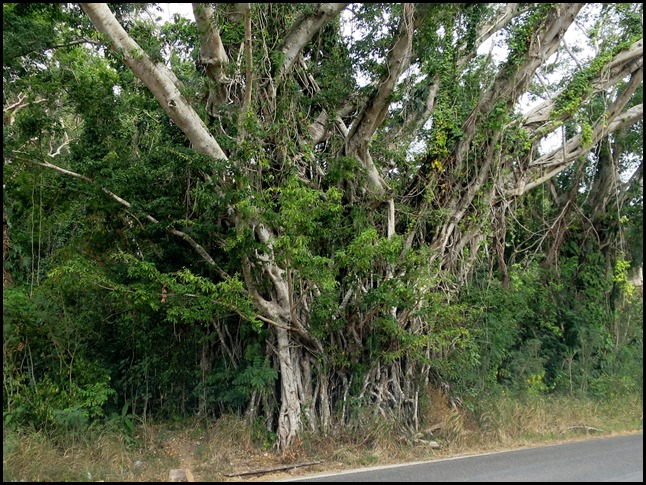 This tree really appeals
to us.
 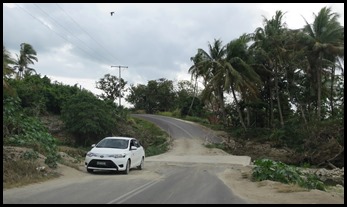 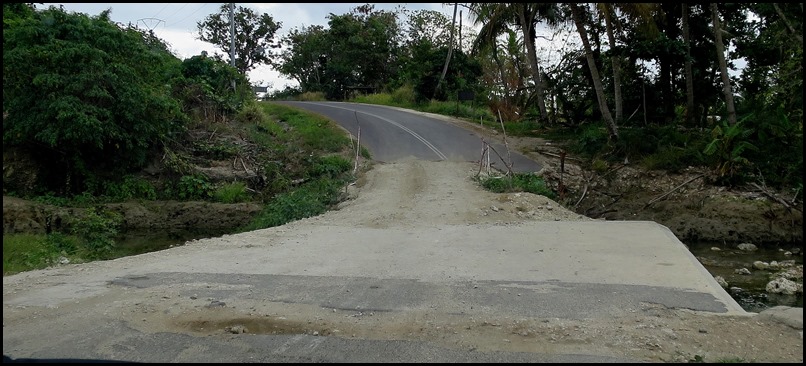 Love this bridge. We wait to go one by one to get the least bumpy bit. Amazing that
this is the main road – in fact the Efate Ring Road.
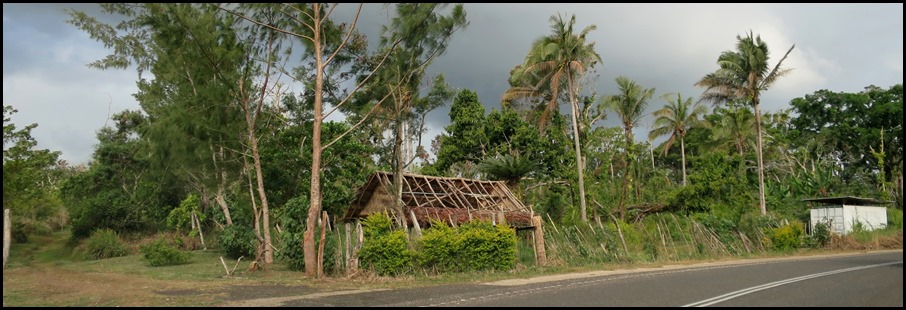 Here’s hoping the coming cyclone season is kind to the Happy
People of Vanuatu, still repairing from
Pam.
 Twenty minutes later we were next to
the Havannah Shopping Centre, the main store for
yachties who anchor in the protected waters – Artok, Lelepa and Moso islands act
like a safety barrier for the ‘port’.
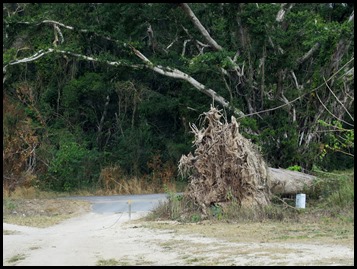 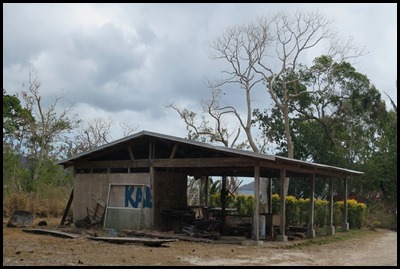 A storm-felled tree by the entrance to the ‘port’. Not sure if the damaged building was a restaurant or the original kitchen
to the beach bar.
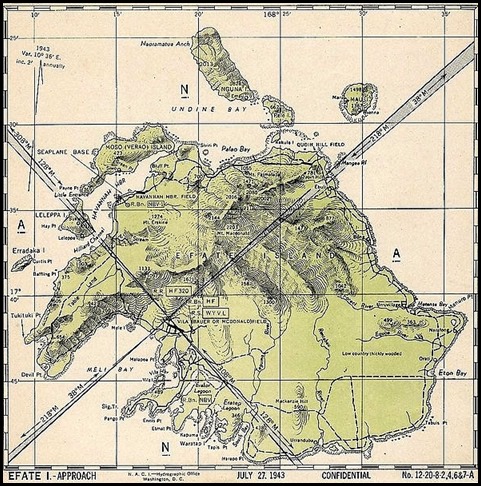 Map of Efate Island showing
military installations [27th of July 1943]
Wiki
Says:
World War II: With Japanese forces establishing bases on Guadalcanal which threatened the sea route between the U.S. and Australia, Admiral King distributed the joint basic plan for the occupation and defence of Efate on 20 March 1942. Under its terms the US Army was to defend Efate and support the defence of ships and positions. The US Navy's task was: (1) to construct, administer and operate a naval advance base, seaplane base, and harbour facilities; (2) to support Army forces in the defence of the island; (3) to construct an airfield and at least two outlying dispersal fields; (4) to provide facilities for the operation of seaplane-bombers. On 25 March 1942, the Army sent about 500 men to Efate from Noumea, and the 4th Defence Battalion, 45th Marines, arrived on 8 April. Elements of the 1st Naval Construction Battalion arrived on Efate on the 4th of May 1942.
An SOC Seagull at Havannah Harbour Efate 1943. Seaplane Base: A detachment of Seebees went north to Havannah Harbour to construct a seaplane base to serve a squadron of PBYs. The Seabees built two seaplane ramps of coral, surfaced with wire mesh, and provided buoys for mooring 14 seaplanes. By 1 June, the PBYs began operating from the new base, bombing the Japanese positions on Guadalcanal. In addition to the ramps and moorings, two small piers, two nose hangars, one 40 feet (12 m) by 100 feet (30 m) seaplane workshop, four 5,000-gallon underground gasoline tanks, and housing facilities for 25 officers and 210 men in Quonset huts were constructed. Havannah Harbour Field: In late 1942 the Seebees constructed a 3,000 feet (910 m) by 180 feet (55 m) fighter airstrip at Port Havannah. US Navy units based at the base included: VP-71 operating PBYs 29 June-20 July 1942.
Quiet waters.
The one beach bar. Very quiet, there is a small boutique resort next door, we settled for lunch. FYI Bear chose his own shirt.
A handsome cockerel came over to say ‘hello’. A lovely wall painting in the bar and a decoration in the car park.
. ALL IN ALL A PEACEFUL STOP
DESPITE THE WEATHER
A TRANQUIL RESORT RATHER THAN A
PORT
|
